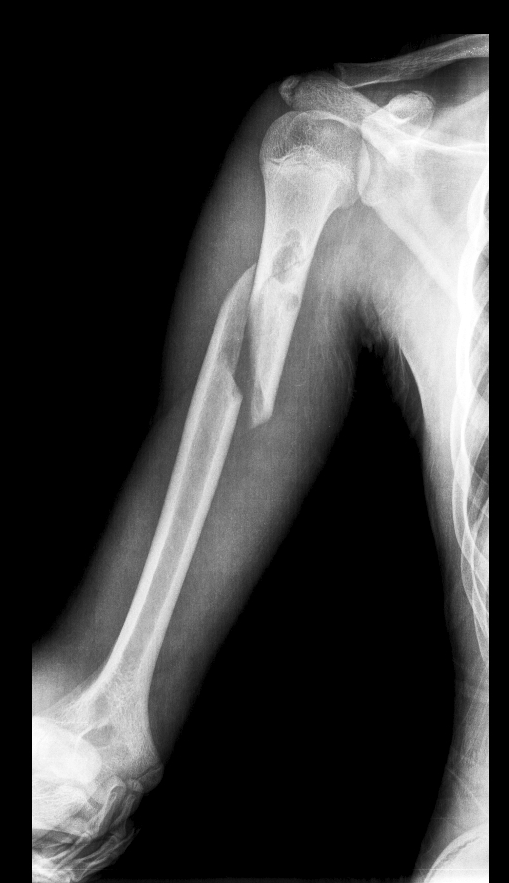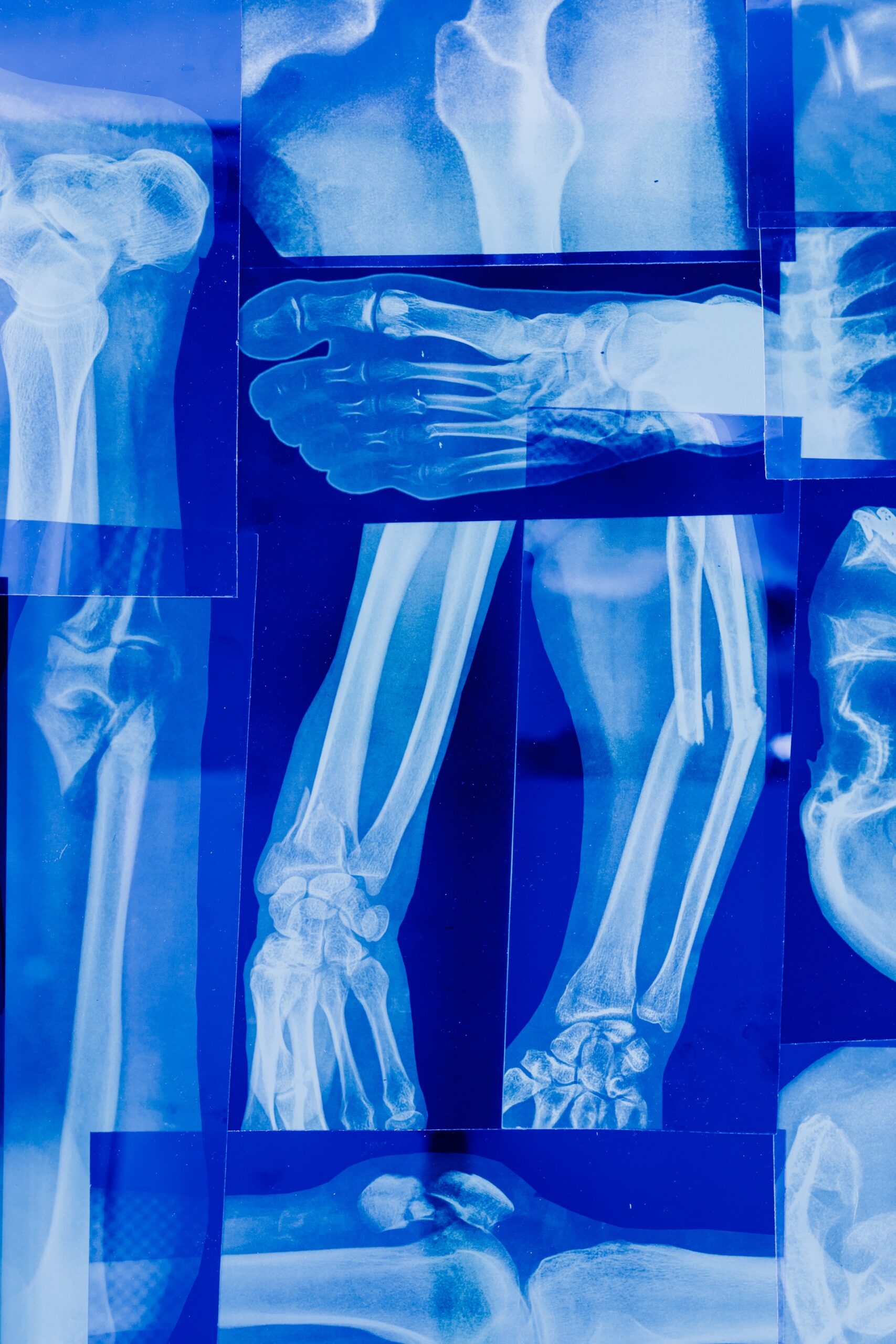Humeral Fractures: What You Need to Know

A humeral fracture is a break in the upper arm bone, called the humerus.
This bone connects your shoulder to your elbow, helping you move and lift your arm. Breaking this bone can be painful, but with the right care and treatment, most fractures heal fully.
This article explains what you need to know about humeral fractures, from causes and treatment, to recovery and prevention.
Types of humeral fractures
Humeral fractures are classified based on where the break occurs in the bone. These include:
- Proximal humeral fractures: These happen near the top of the bone, close to the shoulder. They are common in older adults, especially those with osteoporosis, a condition that weakens bones. For example, a simple fall can cause this type of fracture.
- Humeral shaft fractures: These occur in the middle part of the bone. They are often caused by direct trauma, such as a car accident, sports injury, or a high-impact fall.
- Distal humeral fractures: These occur at the bottom of the humerus, near the elbow. They are less common but are more complicated and may require surgery, especially in cases where the joint is involved.
Understanding the location of the fracture helps doctors decide on the best treatment plan.
Causes of humeral fractures
Humeral fractures can happen for several reasons:
- Falls: Falling onto an outstretched arm or directly onto the shoulder is a leading cause, particularly for older adults.
- Trauma or accidents: Car crashes, falls from significant heights, and sports collisions are common causes of humeral shaft and distal fractures.
- Weak bones (osteoporosis): With age, bones lose density, becoming more fragile and prone to breaking from minor incidents. Osteoporosis increases the risk of humeral fractures even from simple tasks, like tripping and falling.
- Overuse injuries: Repetitive stress, such as in certain sports or occupations, can weaken the bone over time, increasing the risk of fractures.
When to See a Doctor! If you fall, experience severe pain, or notice swelling and deformity in your arm, seek medical care immediately. Early treatment reduces complications and improves recovery.
Symptoms of humeral fractures
If you’ve broken your humerus, you will likely notice:
- Severe pain: Pain occurs immediately at the site of the break and worsens with movement.
- Swelling and bruising: The area may swell quickly, and bruises often develop due to bleeding around the fracture.
- Deformity: In displaced fractures, the arm may look out of alignment or shortened.
- Limited movement: You may find it difficult or impossible to move your arm, shoulder, or elbow.
- Grinding sensation: You might feel or hear a grinding noise when trying to move your arm.
In some cases, particularly with humeral shaft fractures, you may also experience numbness or tingling in the hand or wrist. This can occur if the radial nerve, which runs along the bone, is affected.

Diagnosis
Early diagnosis is important to prevent complications and ensure proper healing.
Doctors use several steps to diagnose humeral fractures:
- Physical examination: Your doctor will check for swelling, tenderness, bruising, and deformity. They will also test your nerve function by assessing sensation and movement in the hand and wrist.
- X-rays: These are the most common tools to confirm a fracture. X-rays show the location, severity, and alignment of the broken bone.
- CT scans: In complex or severe fractures, such as comminuted fractures with multiple fragments, a CT scan gives a more detailed view of the injury.
Treatment options
The treatment for a humeral fracture depends on the location, severity, and type of break (stable, unstable, displaced, or comminuted).
Non-surgical treatment
For stable fractures (where the bone pieces remain aligned), non-surgical treatment is often sufficient. This includes:
- Immobilization: A sling, brace, or cast keeps the arm in place to allow the bone to heal naturally. For example, proximal humeral fractures near the shoulder often require a sling for 4–6 weeks.
- Pain management: Over-the-counter medications, like acetaminophen (Tylenol) or ibuprofen, can help manage pain and swelling.
- Physical therapy: Once the fracture begins to heal, gentle exercises help restore movement and strength. Therapy focuses on preventing stiffness, especially in the shoulder and elbow joints.
Surgical treatment

If the fracture is displaced, unstable, or involves multiple bone fragments (comminuted), surgery may be required. Common surgical techniques include:
- Plates and screws: These are used to hold the bone fragments in place during healing.
- Intramedullary rods: A rod is inserted into the center of the bone to stabilize the fracture.
- Joint replacement: In severe fractures near the shoulder, the damaged joint may be replaced with an artificial one.
Surgery is followed by a period of immobilization and physical therapy to restore function.
Healing and recovery
Most humeral fractures take about 6 – 12 weeks to heal, depending on factors like age, overall health, and fracture severity. Recovery includes:
- Rest: Avoid lifting heavy objects or putting pressure on the injured arm.
- Gradual movement: Physical therapy helps you regain strength, flexibility, and coordination.
- Follow-up care: Regular visits with your doctor ensure the bone is healing properly. X-rays may be taken to monitor progress.
For older adults or those with osteoporosis, healing can take longer. It’s important to be patient and follow your doctor’s advice closely.
Potential complications
While most humeral fractures heal well, complications can occur, including:
- Non-union: The bone fails to heal properly. The occurrence rates are less than 13% for non-operative cases and 15 – 30% for surgical cases.
- Malunion: The bone heals in the wrong position, leading to deformity or reduced function.
- Nerve damage: The radial nerve, which runs along the humerus, can be injured during the fracture, causing weakness or numbness in the hand or wrist. This occurs most commonly in midshaft fractures with rates of 8 – 18%. Typically, it spontaneously resolves in 3 – 6 months.
- Stiffness: Prolonged immobility may result in stiffness in the shoulder, elbow, or both. This occurs in 10 – 30% of cases, and is often dependent on how well rehabilitation is followed.
If you experience unusual pain, swelling, or reduced movement during recovery, notify your doctor.
Preventing humeral fractures
You can take steps to reduce your risk of humeral fractures:
- Prevent falls:
- Install handrails and good lighting at home.
- Remove tripping hazards, like loose rugs.
- Wear sturdy, non-slip shoes.
- Maintain bone health:
- Eat a diet rich in calcium and vitamin D (dairy, leafy greens, fish).
- Exercise regularly, focusing on weight-bearing activities like walking or strength training.
- Talk to your doctor about bone density tests if you’re at risk of osteoporosis.
- Use safety gear: Wear protective equipment when playing sports, biking, or driving. Seatbelts can prevent injuries in car accidents.
Humeral fractures are common injuries but are treatable with proper care. Whether your fracture is near the shoulder, in the middle of the bone, or close to the elbow, understanding your injury and following your doctor’s advice can help you recover fully. With patience, rest, and physical therapy, you can regain the strength and mobility needed to get back to your everyday life.
If you have concerns about bone health or preventing fractures, talk to your healthcare provider about steps you can take to stay strong and active.
Contributing Expert

Jake Larsson, Medicine SI4, University of Alberta
References
Amir S, Jannis S, Daniel R. Distal humerus fractures: a review of current therapy concepts. Curr Rev Musculoskelet Med 2016; 9:199.
Bassett R. Midshaft humeral fractures in adults. In: UpToDate, Connor RF (Ed), Wolters Kluwer. (Accessed on December 10, 2024.)
Bassett R. Proximal humeral fractures in adults. In: UpToDate, Connor RF (Ed), Wolters Kluwer. (Accessed on December 10, 2024.)
Bégué T. Articular fractures of the distal humerus. Orthop Traumatol Surg Res 2014; 100: S55.
Cadet ER. Evaluation of Glenohumeral Instability. Orthopedic Clinics of North America. 2010. 41(3): p. 287-295.
Chapman, J. R., & Della Rocca, G. J. (2019). Complications in the treatment of humeral fractures: A clinical review. Orthopedic Reviews, 11(2), 123-130.
Colbenson KM, Raukar N. Elbow fractures and dislocation in adults. In: UpToDate, Connor RF (Ed), Wolters Kluwer. (Accessed on December 10, 2024.)
Court-Brown CM, Garg A, McQueen MM. The translated two-part fracture of the proximal humerus. Epidemiology and outcome in the older patient. J Bone Joint Surg Br 2001; 83:799.
Cummings, J. P., & McKee, M. D. (2015). Treatment of humeral fractures: Surgical options and outcomes. Orthopedic Clinics of North America, 46(3), 283-295.
Lee, H. S., & Jung, W. K. (2018). Rehabilitation following humeral fractures: A critical review. Journal of Orthopedic Rehabilitation, 15(4), 112-118.
Miniato MA, Anand P, Varacallo M. Anatomy, Shoulder and Upper Limb, Shoulder. [Updated 2023 Jul 24]. In: StatPearls [Internet]. Treasure Island (FL): StatPearls Publishing; 2024 Jan.
Neer, C. S., & Shelton, D. M. (2016). Proximal humeral fractures: Epidemiology and treatment options. Journal of Bone and Joint Surgery, 98(6), 456-460.
Nicholson, J.A., Makaram, N., Simpson, A.H.R.W., & Keating, J.F. Fracture nonunion in long bones: A literature review of risk factors and surgical management. Injury. Available online November 18, 2020.







